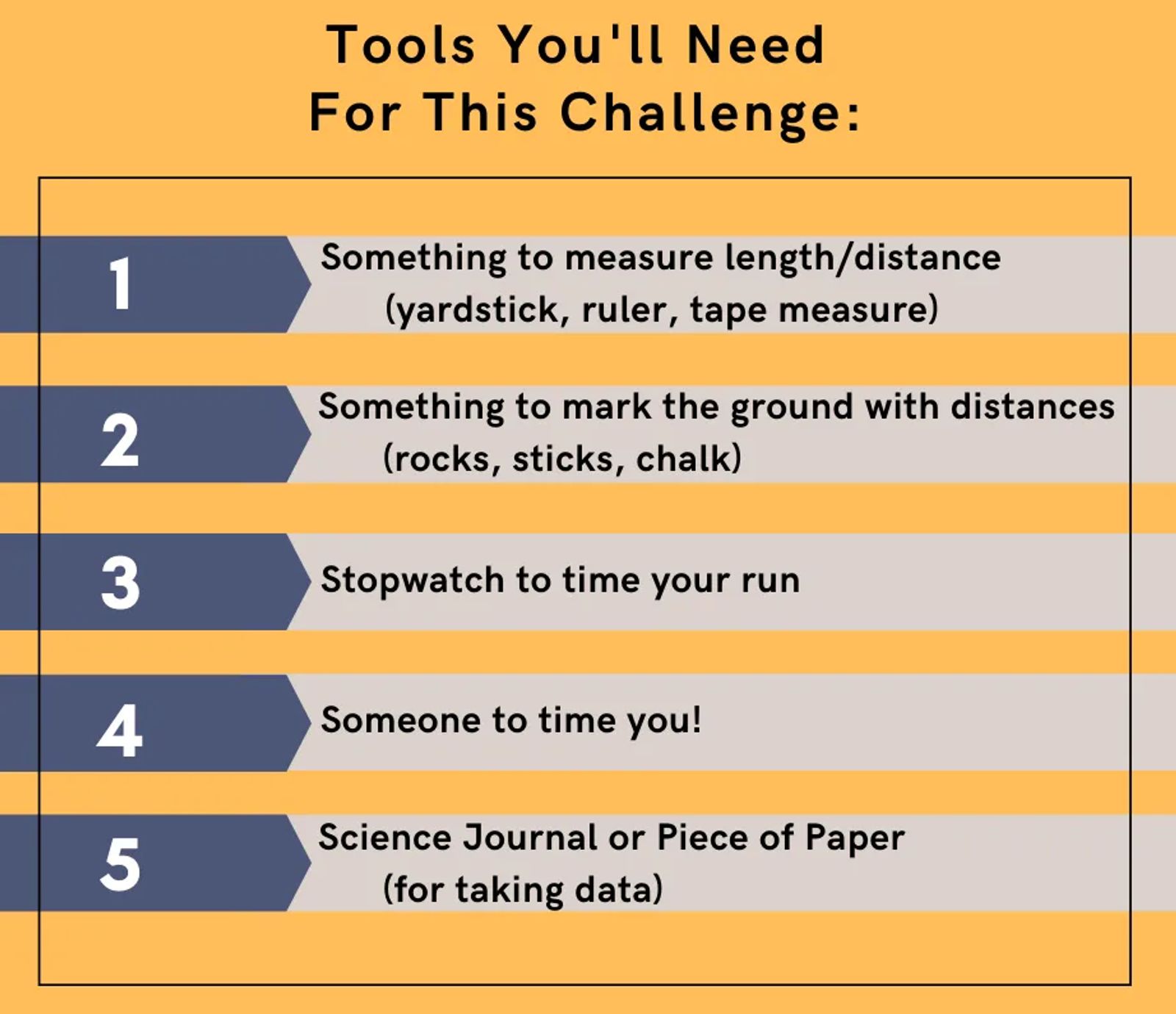Animals in Motion
12/10/2020
Compare your speed and jump to an animal!
For this challenge, you just need something to measure distance, something to measure time, and someone to watch the time, and you can choose slow or fast animals, huge or tiny animals, or anything in between to compare yourself to.
Then you’ll be the scientist and, using a piece of paper or your journal, write down a hypothesis or 2 (what you expect yourself to be able to do), some questions you want to answer (how do you compare to the animal(s) you chose), and then set up your experiment.
During your experiment, make sure you (or someone who is helping you) takes and writes down the data, and then do the math to compare yourself to the animals you’ve chosen: how different are you from your animal friends? Let us know how it goes!

How Fast Do Animals Go?
They go f a s t but don't take our word for it. Check out Speed of Animals to learn, well, the speed of animals. Make sure to select units you understand; you can choose metric units (m/s and km/h) or freedom units (mph or ft/s). You might be faster than some animals that you didn't expect; you might even be able to outrun a T. rex (to be fair, there are no T. rex today that run at all). There are other animals that are so fast you have no hope of catching up, like pronghorn (speed goats). If you're interested in why these animals here in Montana zip around so fast, check out this New York Times article. If there is an animal that you're particularly interested in or you want us to know about, let us know!
How Far Can Animals Go?
First: we think it's important to note that we don't consider birds as leaping. The longest jump record goes to a snow leopard with an astonishing 49 feet. For a sense of scale, adult T. rex were around 40 feet long, meaning a snow leopard could easily jump past a T. rex. For a more modern sense of scale, 49 feet is about the length of 2.5 Ford F-150 pick-ups. Of course, there are animals that have impressive vertical hops too, so check out this article by the BBC to learn more.

